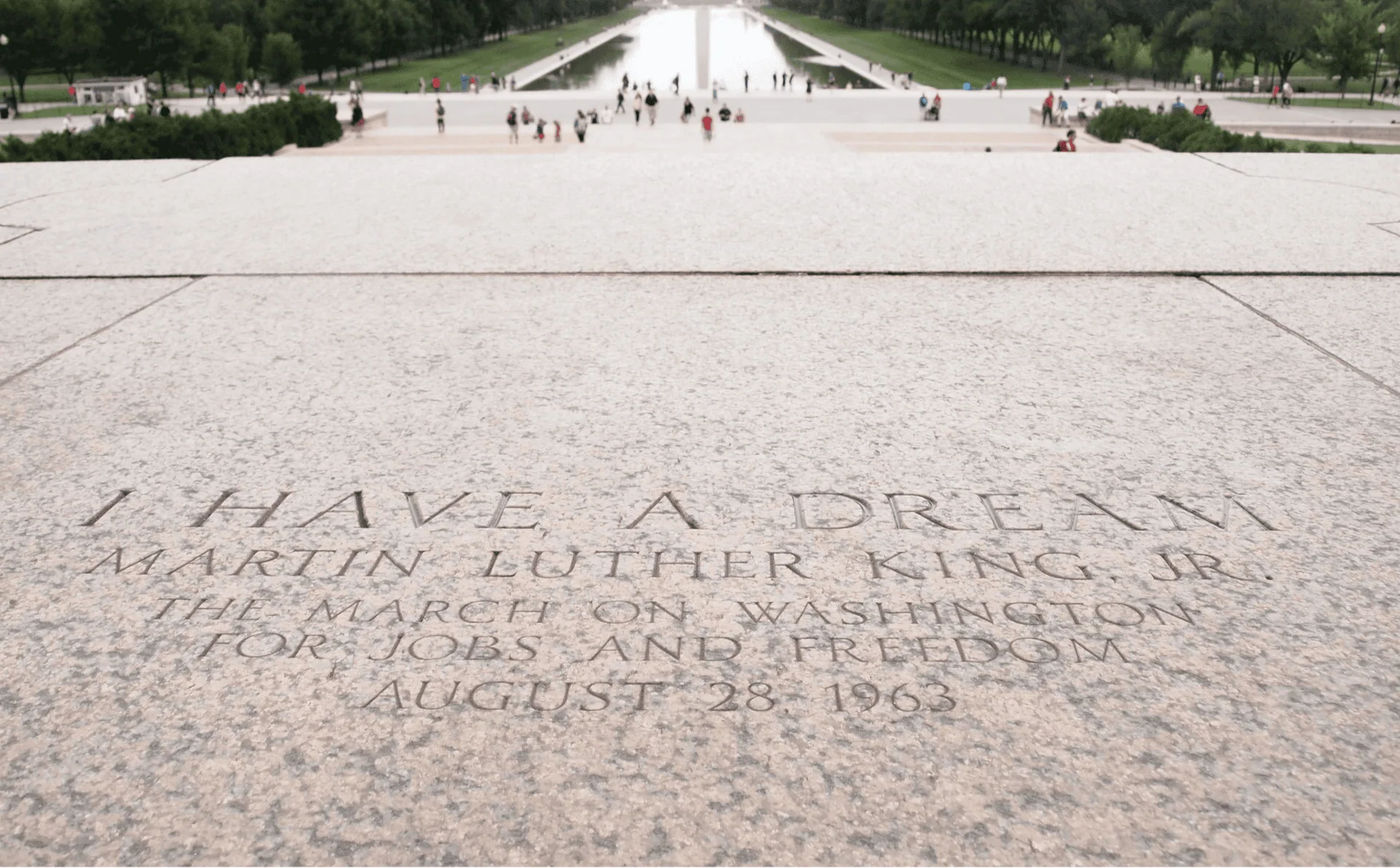Welcome to the inspiring journey through one of the most pivotal moments in American history, Martin Luther King Jr.’s “I Have a Dream” speech. We will dive into the rich legacy of Dr. King’s most famous address and explore its profound impact on civil rights and cultural diversity, as well as how it continues to influence modern society and workplaces.
Why It Matters
If you’re an entry-level job seeker, understanding the historical context and the ongoing implications of Dr. King’s words will enrich your perspective and empower you to engage in workplaces that champion diversity and inclusion.
Join us as we explore themes from the speech, reflect on their significance in today’s social landscape, and consider how Dr. King’s vision for equality can guide our approaches to career development and workplace inclusion. This understanding is crucial for anyone looking to thrive in inclusive, forward-thinking environments.
The Historical Significance of “I Have a Dream”
On August 28, 1963, Martin Luther King Jr. stood on the steps of the Lincoln Memorial and delivered a speech reverberating through American history’s records. The “I Have a Dream” speech firmly established Dr. King’s essential leadership in the Civil Rights Movement and served as a pivotal milestone for civil rights in America.
Moment of Change
This speech was not just rhetoric but a beacon of hope for millions and a call to action that would lead to significant legislative changes. The power and resonance of King’s words can be understood by looking at the Civil Rights Act of 1964 and the Voting Rights Act of 1965. The dreams he articulated helped to shape legislative strategies and stir a national movement toward equality.
Broader Impact
The ripple effect of King’s words crossed oceans and continents. Leaders and ordinary citizens worldwide drew inspiration from his vision and courage. His speech played a crucial role in promoting global movements for human rights. Today, educators and activists still reference his words to teach lessons on equality and justice.
The original transcript of the speech preserved by NPR and educational programs like the National Park Service’s education resources continue to showcase its importance.
As we reflect on the impact of these pivotal words on inclusion and diversity in hiring, it’s clear that because of the “I Have a Dream” speech, we continue to cultivate a world that strives for equality and respect across all spectrums of society.
Context and Climax of the Civil Rights Movement
The “I Have a Dream” speech by Martin Luther King Jr. did not occur in isolation. It culminated from years of relentless activism and climactic moments that marked the Civil Rights Movement. This period was characterized by significant struggles and victories, all contributing to the dramatic delivery of King’s iconic speech at the March on Washington.
The March on Washington
The March on Washington for Jobs and Freedom, where King delivered his speech, was consequently one of the most significant political rallies for human rights in United States history, attended by over 250,000 people. The march aimed to show the urgent need for better diversity jobs and freedom for African Americans and was a critical point that highlighted the disparity and ongoing segregation.
Legislative and Social Catalyst
The momentum gained from the Civil Rights Movement and King’s speech catalyzed the passing of crucial civil rights legislation. In effect such progress reshaped American society and fortified the nation’s commitment to civil rights and equality. This era set precedents for future movements and legal interpretations regarding equality and human rights.
The significance of the Civil Rights Movement and King’s speech within it is echoed in contemporary discussions about equity. Institutions like the Leadership Conference on Civil and Human Rights and educational initiatives continue to draw from this era, underscoring its lasting impact.
Considering the lasting effects of this period, engaging with resources that provide deeper insight into inclusive company cultures can help you gain a richer understanding of how far society has come and the journey that still lies ahead.
Main Themes in Martin Luther King Jr.’s “I Have a Dream”
Dr. King’s “I Have a Dream” speech is full of themes that resonate deeply with the principles of freedom, equality, and justice. His rhetoric masterfully interweaves visions of a just society with the harsh realities of his present day.
Unity and Brotherhood
One of the most powerful themes in “I Have a Dream” is the call for unity and brotherhood. Dr. King envisioned a world where people of all races could coexist harmoniously. He emphasized that the destiny of all Americans is intertwined, and we must work together for a better future.
Justice and Equality
Justice and equality are central pillars of Dr. King’s speech. He asserted that African Americans were still not free because they were not treated equally by law and society. His demand was apparent: America must live up to its promise of equality for all its citizens.
The Urgency of Now
Dr. King stressed the urgency of taking immediate action against injustice. He warned against the “tranquilizing drug of gradualism” and called for “fierce urgency of now,” urging his listeners not to become complacent.
The themes of this historic speech continue to influence discussions on rights today. They are reviewed in educational resources such as the Stanford King Institute and are mirrored in calls for action within highlighting personal and cultural identity in resumes.
Dr. King’s Vision for America
Martin Luther King Jr.’s “I Have a Dream” speech vividly describes an inclusive and united America. His vision was not only about ending segregation but breeding a society where every individual can thrive regardless of race.
A Society Based on Character
One of the core elements of Dr. King’s vision is a society where people are judged by their character, not the color of their skin. This idea challenges everyone to look beyond superficial differences and value the intrinsic qualities of every individual.
Economic and Social Justice
Dr. King understood racial justice was inextricably linked to economic and social justice. He advocated for equal access to jobs, education, and economic opportunities as fundamental rights that must be available to all Americans.
Today, this vision is echoed in discussions about economic disparities and social mobility challenges, which can be further explored through resources like the Poverty USA’s educational site. These issues are also relevant in ensuring that workplaces remain inclusive and supportive for all employees.
Influence on Civil Rights and Cultural Diversity
Dr. Martin Luther King Jr.’s profound “I Have a Dream” speech shaped the Civil Rights Movement and cemented his legacy in advocating for cultural diversity and recognition.
Catalyst for Civil Rights Legislation
“I Have a Dream” significantly influenced the passage of pivotal civil rights legislation. The adoption of the Civil Rights Act of 1964 and the Voting Rights Act of 1965 were direct impacts. These legal strides were monumental in legislating against racial discrimination.
Evolution of Cultural Diversity
Fostered by King’s vision, the appreciation for cultural diversity has evolved in the United States. Educational curriculums now often include discussions on racial equality as central themes, influenced by King’s teachings.
Resources such as the U.S. Department of Education Civil Rights ensure educational equity, reflecting King’s dream for an inclusive academic environment. His speech also resonates in workplaces striving to embody these values, which is evident in modern diversity-focused company cultures.
Current Reflections on Dr. King’s Dream
Reflecting on “I Have a Dream” by Martin Luther King Jr., we see a profound, ongoing relevance in our society today. His words inspire change and challenge us to fulfill the promises of equality and justice for all.
Continued Relevance in Society
Despite the progress made since 1963, the ideals King spoke of remain a benchmark for measuring our success in civil rights. This speech encourages ongoing dialogue and action toward eliminating racial and economic disparities.
Modern Movements and King’s Legacy
Modern civil rights movements, such as Black Lives Matter, draw inspiration from King’s speech. His emphasis on peaceful protest and solidarity provides a powerful template for today’s advocacy against injustice.
The need for education based on King’s principles is evident in institutions that employ his teachings. Professionals striving for inclusive practices can find guidance on maintaining King’s vision in every work sector.
How Today’s Workplaces Embody Dr. King’s Ideals
Modern workplaces increasingly reflect the ideals Martin Luther King Jr. championed in his “I Have a Dream” speech. Diversity, equity, and inclusion are now central themes in corporate policies and practices.
Advancements in Workplace Diversity
Companies today seek to create environments where diversity is valued, and equity is prioritized. This includes implementing diversity training programs while enhancing recruitment strategies to ensure a broader range of backgrounds and perspectives are represented.
Inclusive Practices in Hiring
Inclusive hiring practices are fundamental to King’s vision for equality. For example, many companies now use software that minimizes unconscious bias and policies that promote diversity in hiring decisions.
This commitment to diversity can be seen in the policies of diversity-focused companies, guaranteeing that the workplace becomes an illustration of the society King dreamed of. Further information on maintaining inclusive environments can be gleaned from resources such as the U.S. Equal Employment Opportunity Commission, which provides guidelines for upholding equity in employment.
Moving Forward: The Legacy of ‘I Have a Dream’
The legacy of “I Have a Dream” Martin Luther King Jr. extends beyond his speech’s anniversary or Black History Month. It was meant to challenge us daily toward more significant equity and justice.
Continuous Struggle for Equality
The quest for equality and freedom is ever-present. While significant strides have been made, this journey, inspired by King’s dream, requires continual effort and dedication.
Empowering Future Generations
Education plays a pivotal role in sustaining King’s legacy. Programs that teach civil rights history equip young minds to continue the quest for justice.
Resources like the Zinn Education Project offer materials that help educators instruct students on the complexities of civil rights movements. Likewise, learning about diversity-focused company cultures can enhance one’s understanding of modern equity challenges.
FAQs
What was the central message of “I Have a Dream”?
Martin Luther King Jr.’s speech emphasized the need for racial equality and an end to discrimination.
Why is “I Have a Dream” so significant?
The speech symbolizes the fight for civil rights and is a defining moment in American history, inspiring generations.
How has “I Have a Dream” impacted modern society?
It has influenced laws, educational content, as well as ongoing civil rights movements worldwide.
Is “I Have a Dream” linked to current events?
Yes, it is cited in discussions regarding racial justice, equality protests, and policy changes to this day.
Where can I learn more about Martin Luther King Jr.?
Museums, educational websites, and civil rights groups offer extensive resources on his life and legacy.
Conclusion
Reflecting on “I Have a Dream” by Martin Luther King Jr., we recognize the enduring power of his words and the ongoing relevance of his vision. King’s dream of a society where all individuals are judged by their character rather than their skin color is still an essential goal for us all. As we revisit this pivotal speech each year, we find fresh insights and motivations to pursue justice, equality, and inclusivity.
Take Action
To truly honor Dr. King’s legacy, we must continue to strive for the ideals he so eloquently championed. Join Diversity Employment today to be part of a community that promotes diversity and inclusivity in the workplace and community. Together, we can make significant strides towards a more equitable society.
Be the Change
Let us stand together, inspired by “I Have a Dream” by Martin Luther King Jr. We can nurture a society where justice and equality are ideals and realities for everyone. Join us in making Dr. King’s dream a part of our collective future!




